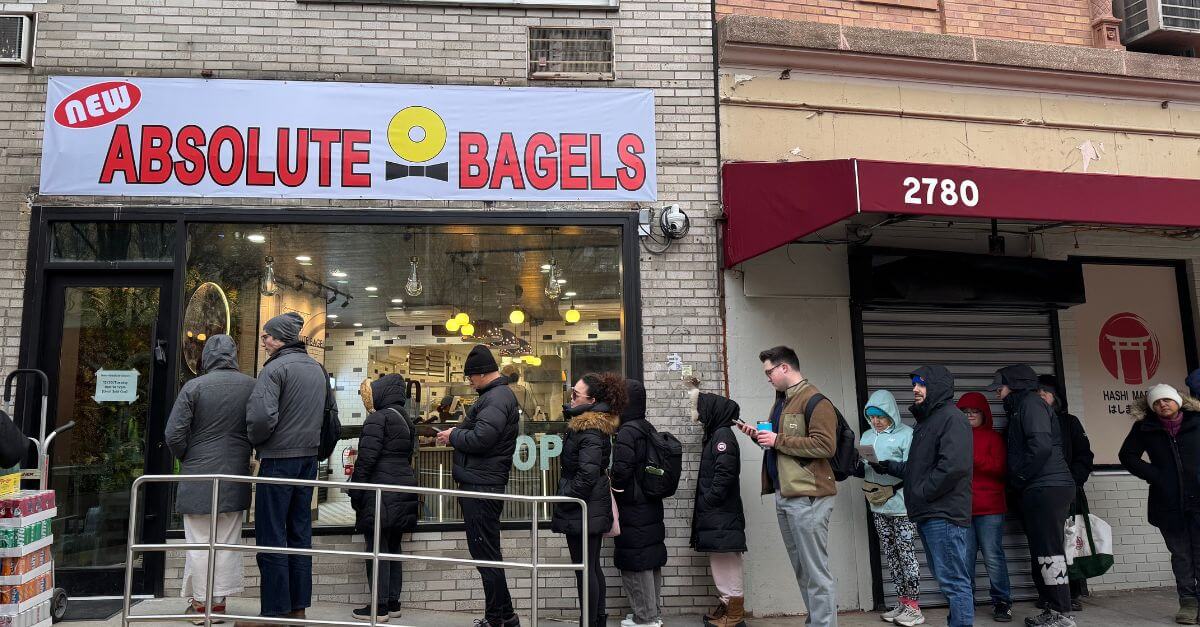On Israel’s 75th Independence Day, its flag has taken on new meaning as a protest symbol
‘It’s a symbol that had been hijacked for way too long by the right,’ one Yom Haatzmaut partier in Tel Aviv said about the flag.

Israeli students protest against Prime Minister Benjamin Netanyahu’s new hard-right government, in Tel Aviv University’s campus, on January 16, 2023. Photo by Jack Guez/AFP via Getty Images
TEL AVIV (JTA) — Avigail Arnheim has been protesting Benjamin Netanyahu for years, starting with the demonstrations in Jerusalem that began in 2020, calling on him to resign as Israel’s prime minister.
When Netanyahu returned to office in December, Arnheim again took to the streets — this time to protest Netanyahu’s attempt to sap the Israeli Supreme Court of its power. And now, she comes armed with what she sees as a potent symbol: an Israeli flag emblazoned with the words of the country’s Declaration of Independence.
“I feel that the people of Israel woke up, and finally understands that life needs to come with values, with morals and with caring,” she said at a mass protest Tuesday night in Tel Aviv, as Israel began celebrating its 75th Independence Day. Arnheim believes those ideas are reflected in the declaration, which was signed on the day of Israel’s founding, traces the connection of the Jewish people to the land of Israel, and pledges democracy and human rights.
She added, “I think that the meaning of the flag has received a place in a society that wasn’t aware of it for a long time.”
Seeing the streets of Israel festooned with flags is one of the hallmarks of the country’s Independence Day, called Yom Haatzmaut in Hebrew. It’s common for flags to line streets and hang from balconies. A popular children’s song sung on the holiday begins, “The whole land is flags.”
But this year, Israel’s quintessential national symbol has taken on a different meaning for some, as the hundreds of thousands of anti-government protesters have, for months, made the flag the icon of their cause. The flag has become so associated with the protests that Zichron Yaakov, a city north of Tel Aviv, briefly banned the flag and images of the Declaration of Independence from its Independence Day parade.
Voices on the right have chafed against the idea that the flag now indicates opposition to the government. But there was little, if any, skepticism about that idea on the streets of Tel Aviv on Tuesday night, where protesters enthusiastically adapted a range of Independence Day traditions to express their opinions.
Some protesters viewed their embrace of the flag as a corrective that now allows the flag to represent what they see as Israel’s founding aspirations, following years during which it was perceived as a symbol of Israel’s right wing. Before this year’s protests, another prominent political association for the flag was with religious nationalists who hold an annual “flag march” in Jerusalem’s Old City that has stoked Israeli-Palestinian tensions.
“It’s a symbol that had been hijacked for way too long by the right,” said Roy Rob, a graphic designer at the Tel Aviv rally who splits his time between Israel and Brooklyn. “It’s the same in the States: The American flag has really been hijacked and pigeonholed.”
Regarding the Israeli flag, he added, “Now it’s being democratized again. It makes sense that the people who really care about the origin of Israel, what Israel is all about, use the original symbols of it.”
Some right-wingers aren’t ready to yield Israel’s national symbols. Gideon Dokov, an editor at the right-leaning newspaper Makor Rishon, called the idea that the flag represents opposition to the judicial overhaul “absurd.”
“By mistake or intentionally, it seems that in recent months, there are those who are trying to take ownership of the national symbols — the flag and the Declaration of Independence — on behalf of the protests, just as they’re trying to take ownership of [the concept of] democracy,” Dokov wrote earlier this month. “Both are incorrect.”
In any case, flags were ubiquitous at Tuesday night’s protest. When asked where they got theirs, several protesters made a perplexed face that seemed to ask, “Where have you been all this time?”
The flags, they said, aren’t hard to get. Many were distributed for free at earlier protests, along with black T-shirts that read, “De-mo-cra-cy” in Hebrew block letters, copying the central chant of the demonstrations. Other shirts, like Rob’s, which read, “There’s no democracy with occupation,” were also distributed by activist groups at earlier protests. Many flags included the phrase “Free in our land,” which comes from Israel’s national anthem.
Others already had flags at home, and some bought them recently. At the protest, a man who was selling the flags and other assorted tchotchkes out of a stuffed shopping cart said the flag itself, without a pole, costs around $5.50. He said he bought his merchandise from stores and was reselling it, but would not provide further details.

The flags with the Declaration of Independence text, Arnheim said, went for about $13.75 and were sold by their creator via group chats used to organize the protests. Nati Hochberg, who traveled from a town north of Tel Aviv to demonstrate, said he bought his flag (with pole) for some $11 at a hardware store, after someone stole a previous flag of his from his motorcycle.
“We’ve taken back what belongs to us,” Hochberg said of the flag. His friend Tal Vardi, who traveled with him and has had his flag for years, added, “This population for many years ceded these symbols and now it’s taking them back. … I don’t know if it happened coincidentally, but it’s a feeling that it also belongs to us.”
That the flag has turned into a protest symbol, said one woman from northern Israel who declined to give her name, elicits a mixture of “pride and sadness” regarding the political conflict raging in the country.
“It’s clearly preferable for this not to be,” she said while holding a flag identical to Arnheim’s. “But if it is like this, at least the flag should have meaning.”
The protesters didn’t shy away from adapting other Independence Day pastimes, either. A white, foamy spray traditionally blasted by children on the holiday was being rebranded at the protest as “democracy snow” (one big can for about $2.75).
At a less crowded area of the protest, someone used the spray to spell out “democracy” in large letters on the ground. On a nearby bicycle path, the word “Leave,” used as a chant against Netanyahu, was also written in the spray. A cyclist stopped short before running it over.

Soft plastic hammers, another holiday mainstay, were also visible throughout the crowd. And a DJ blasted classic Israeli dance music in the middle of the demonstration, including the American Jewish summer camp favorite “Zodiac,” sung by Yaron Hadad.
In general, signs of the protests freckle Tel Aviv, which has been the nerve center of the demonstrations and the bastion of Israel’s left-wing minority. Municipal bus stops bear signs playing on the words of the national anthem and implying that the protests will keep Israel “Free from racism,” “Free from repression of women” and more. Graffiti supporting the protests — such as “Bibi is a traitor” — also isn’t hard to find, though there is also a smattering of pro-overhaul graffiti such as one message calling Israel’s Supreme Court a dictatorship.
Some paraphernalia at the demonstration trumpeted specific causes, like an LGBTQ pride flag, a flag that spelled out “democracy” in the colors of the Israeli and Palestinian flags, or a T-shirt, given out by an self-styled “moderate majority” activist group, that read “I [heart] Bagatz,” the Hebrew acronym for the Supreme Court.
Some participants got more creative. At a table in a sparse area, a few people offered free alcohol to passersby while a young man using a megaphone sang “Democracy and arak” to the tune of the famous riff from the White Stripes’ “Seven Nation Army.”
The idea, his colleague Ron said, was to give people free drinks to celebrate the country and the protests — which they hope will preserve the possibility for young people to get an education and find dignified work.
“In general, this is our last shot to save democracy, so everyone who wants to save democracy gets a shot as a gift from us,” said Ron, 23, who declined to give his last name. ”We love everyone, and we love democracy.”
This article originally appeared on JTA.org.















